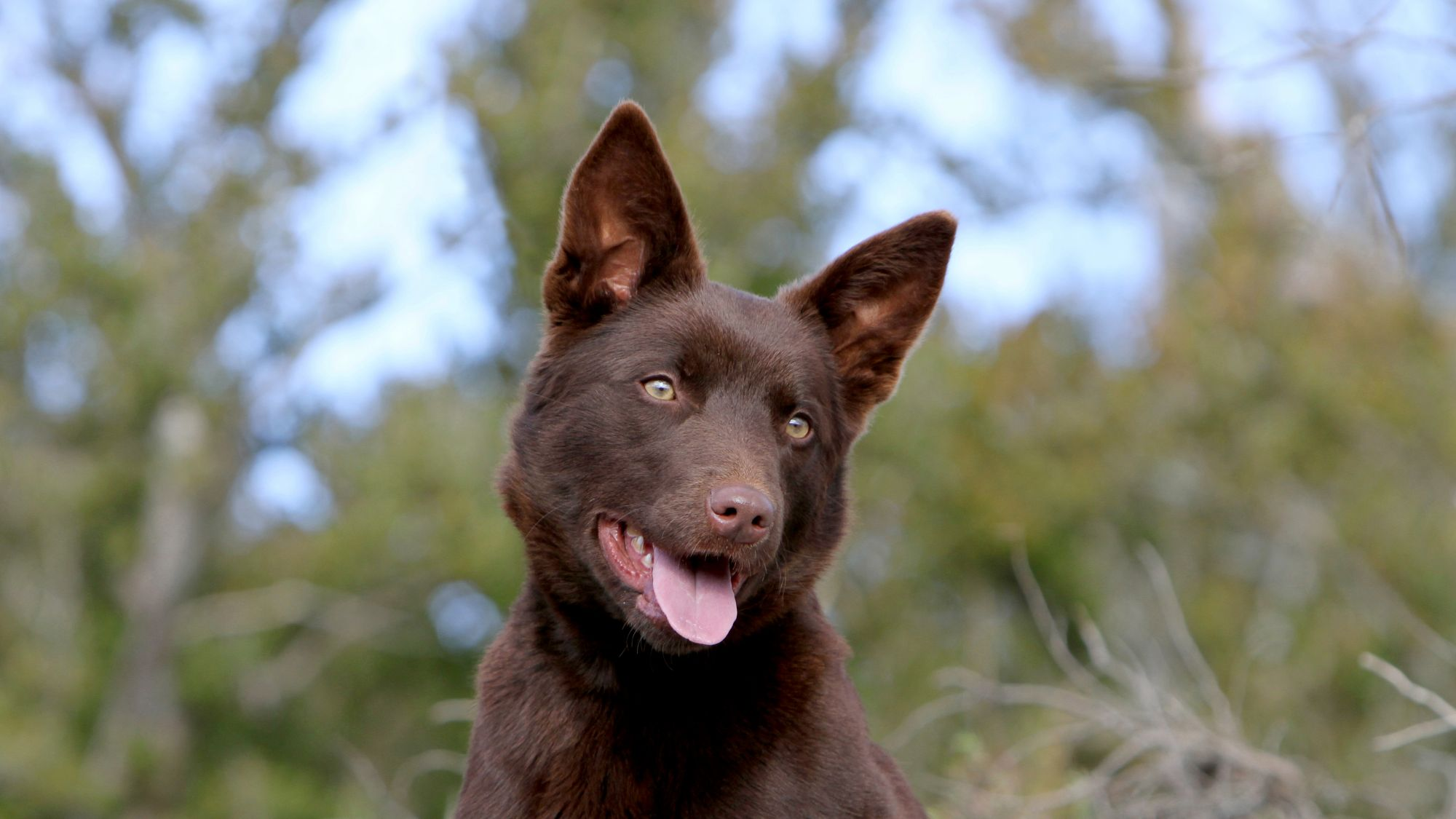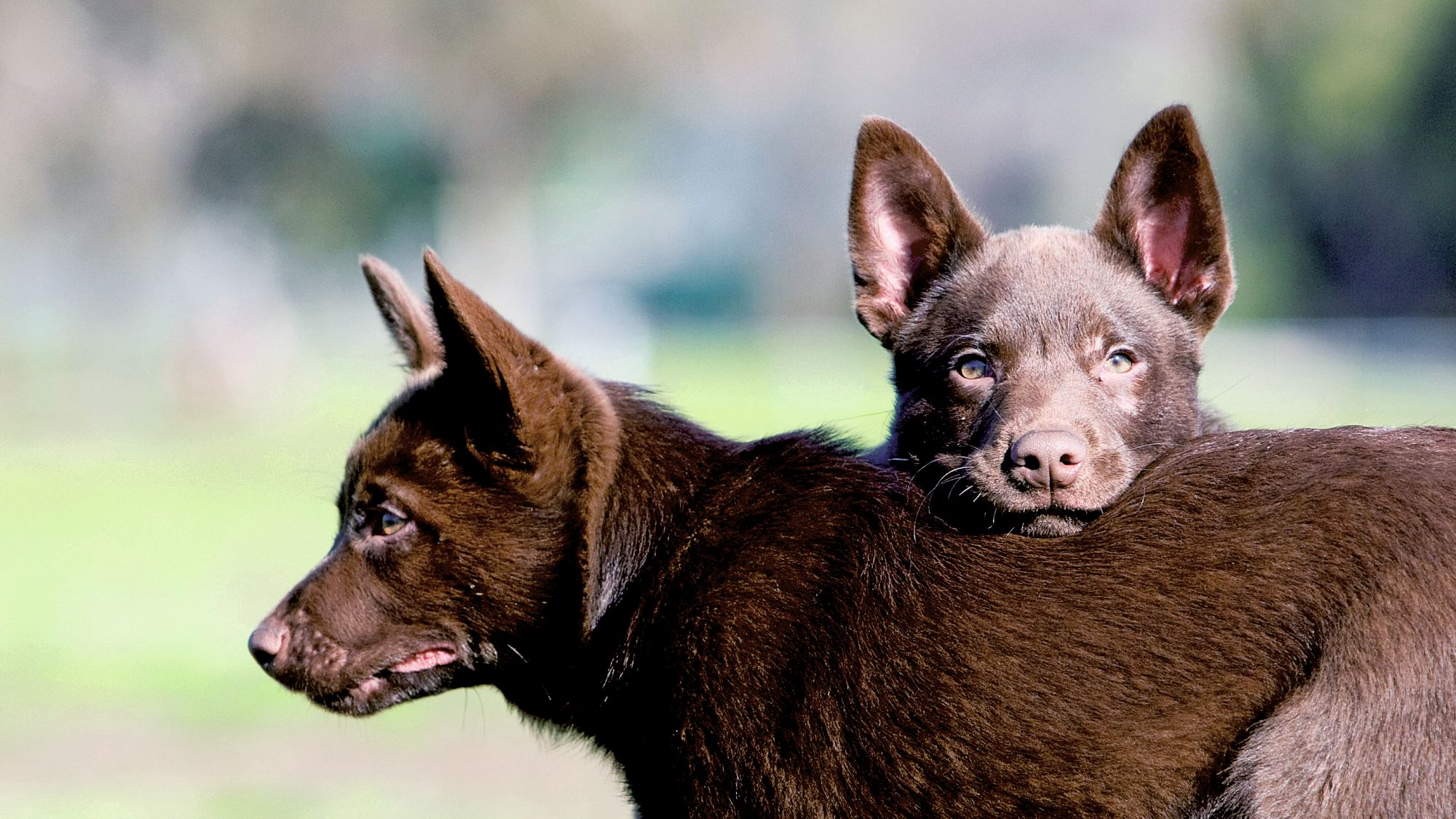
Let's talk Australian Kelpies
The mere mention of Australia brings to mind adventurous people with a zest for life so it’s natural that a dog with the same qualities would come from the Land Down Under. The Australian Kelpie is a sheepdog who’s both lively and dear, with a canine zest to beat all. Incredibly energetic, they are a working breed able to herd with little direction. Cooperative to the end, expect good behaviour on the homefront as well from this winsome and affable breed.Official name: Australian Kelpie
Other names: Kelpie, Barb
Origins: Australia

| Drooling tendencies |
|
Warm weather? |  |
| Shedding level | Suited to apartment living? | ||
| Energy level (high, low, medium) *: | High | Family pet? * |
|
| Compatibility with other pets |  |
Can stay alone?* |
* We advise against leaving pets alone for long stretches. Companionship can prevent emotional distress and destructive behaviour. Speak to your veterinarian for recommendations.
Every pet is different, even within a breed; this snapshot of this breed’s specifics should be taken as an indication.
For a happy, healthy and well-behaved pet, we recommend educating and socialising your pet as well as covering their basic welfare, social and behavioural needs.
Pets should never be left unsupervised with a child.
All domestic pets are sociable and prefer company. However, they can be taught to cope with solitude from an early age. Seek the advice of your veterinarian or trainer to help you do this.


| Baby age: | Birth to 2 months |
| Puppy age: | 2 to 12 months |
| Adult age: | 1 to 7 years |
| Mature age: | 7 to 10 years |
| Senior age: | from 10 years |

1/7
Get to know the Australian Kelpie
All you need to know about the breed
What could be more fun than a dog that looks like a fox, jumps as high as a deer, and plays well with sheep? The Australian Kelpie offers all of this and so much more. Willing owners will be wowed by the over-the-top activity level and incredibly high intelligence of Australia’s native breed.
Years of breeding by devotees of this dynamic dog have produced an incredibly capable canine, and two types have come to pass: The Show, or Bench, Australian Kelpie, used pretty much solely for conformation dog shows, and the Working Australian Kelpie. The latter is able to herd large swathes of sheep or livestock with little-to-no commands from their owner and can suddenly change direction, even at top speed. Almost self-sufficient, they’re fearless when staring down a herd of cows in need of corralling.
It’s no surprise when witnessing the breed’s lithe body, one that exudes a great state of physicality. The Australian Kelpie is blessed with robust health and has no known genetic disorders or diseases. As active as they are, the energy of Australian Kelpies can be tempered to suburban life, too, as long as their owner can keep up with them.
The coat of the Australian Kelpie also comes in a whole host of colour combinations, including black and red – often dappled with tan – fawn, chocolate brown, or smoke blue. It’s just more to love and another great facet of this rock star breed.

2/7
2 facts about Australian Kelpies
1. Energy to burn
Some breeds have nearly boundless energy, and the Australian Kelpie is one of them. Used for herding, the dog is fearless when it comes to corralling large groups of cattle, goats, or sheep and can do so single handedly. They’re not suited for living situations where they don’t have space to run or a job to do. They do excel at sporting and agility competition, and if you own a ranch or farm, this is the dog for you.
2. A herder on the homefront
Dogs used for herding have an innate drive to bring bodies together—usually animals, but at times that means kids, too. The Australian Kelpie has been bred over the years to herd (called mustering in their native land), producing this instinctive need that may play itself out with members of the family as well. It just shows their protective side, but you can temper their need to do so with proper training. Teach them the difference between a baby goat and a baby as early as possible and they’ll learn soon enough.
History of the breed
A wonder in the canine kingdom, the Australian Kelpie is a prized breed Down Under, revered for their nonstop energy and upbeat attitude. The breed hails from Collie-type dogs imported from Scotland.
The first documented Australian Kelpie came to prominence in 1872 after being purchased by a gentleman named Jack Gleeson in the town of Casterton, Victoria, Australia. The dog was named for the water spirit of Celtic folklore. The Working type was then developed by livestock farmers in Victoria and New South Wales who needed a fast dog with loads of endurance that could handle thousands of heads of cattle spread over an equal amount of acreage. The dog also needed to be able to handle the harsh, dry conditions and extreme heat found there. The lively Australian Kelpie was the answer.
The Australian Kelpie breed was recognised by the Federation Cynologique Internationale in 1973 and by the American Kennel Club in 2017.

4/7
From head to tail
Physical characteristics of Australian Kelpies
1. Ears
Defining trait of very large pointed ears that stand erect.
2. Head
Head proportional to body, long, pointed muzzle. Nose colour matches coat.
3. Body
Fit, very muscular body.
4. Tail
Medium-length profuse tail, slightly curved.
5. Coat
Double coat with tight and short outer coat that lays flat, dense and shorter undercoat.

5/7
Things to look out for
From specific breed traits to a general health overview, here are some interesting facts about your Australian Kelpie
6/7
Caring for your Australian Kelpie
Grooming, training and exercise tips
As if the Australian Kelpie’s cooperative disposition and energetic manner weren’t enough, grooming the breed is enjoyable as well. They benefit from a weatherproof double coat comprised of close-cropped hair that requires just weekly brushing. Since the Australian Kelpie spends so much of their time out of doors, they can get dirty; baths should be given as needed. Make sure to remove any grass seed or twig that may get trapped in the hair after they come in from outside.Did you say exercise? It’s a given for this breed, and their need is constant. They were bred to work and need a job to do. Agility competitions are suitable but the breed is really best for a ranch or farm where they can assist in herding large packs of animals. Talk about a specific job description!
That said, the Australian Kelpie breed is also incredibly easy to train. Once schooled, they are known to carry out their herding duties with little-to-no direction, a fairly incredible feat for any canine. It’s a joy to watch, and they’re all too eager to do it.
7/7
All about Australian Kelpies
Incredibly athletic, the Australian Kelpie is at their best with an equally active owner. With their breeding as a herding dog, the Australian Kelpie needs to be occupied most of the time; sitting idle is not their thing. If you like long walks and hikes, this is the breed for you.
It’s easy to confuse energy with assertiveness but the Australian Kelpie is not at all an aggressive dog. They will defend family and other house pets, often putting themselves at peril if needed. They are highly active dogs who bond closely with family and all those they care about and have a huge sense of duty but zero natural aggression.
translations.feature.breeds.otherbreeds
Read more on this topic

How your dog's nutrition needs change with age

How to adopt a dog

Things to consider before getting a dog
Sources
1 - Veterinary Centers of America https://vcahospitals.com/
2 - Royal Canin Dog Encyclopaedia. Ed 2010 and 2020
3 - Banfield Pet Hospital https://www.banfield.com/
4 - Royal Canin BHN Product Book
5 - American Kennel Club https://www.akc.org/



